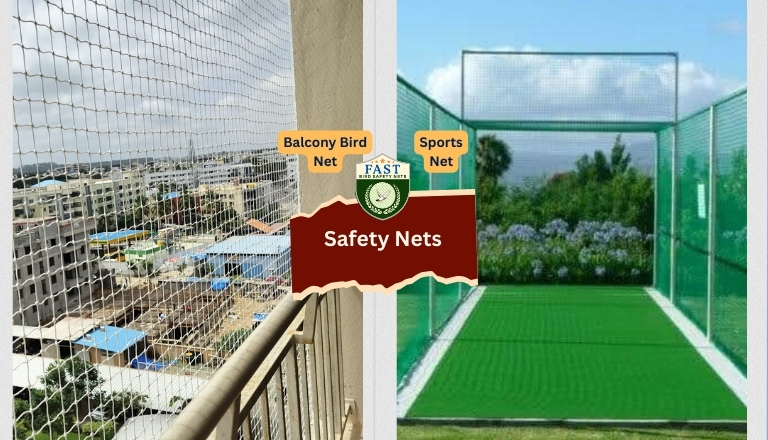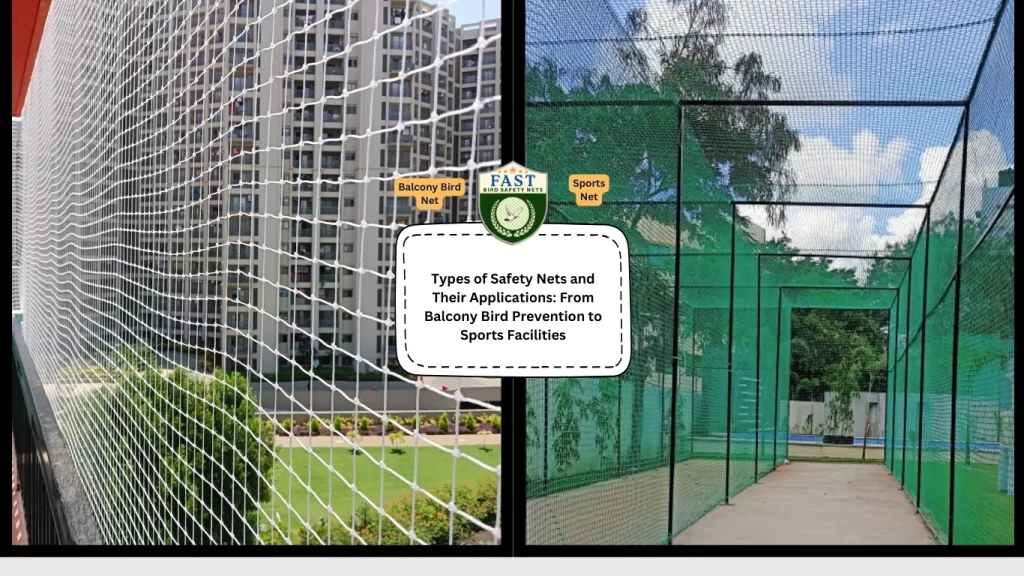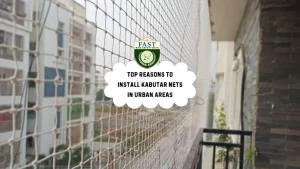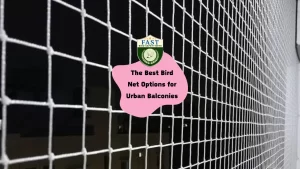Safety nets are indispensable tools across a wide array of environments, serving as barriers to prevent falls, contain hazards, and enhance security. In this comprehensive guide, we’ll delve into the diverse types of safety nets available and their myriad applications. From deterring birds on balconies to safeguarding workers on construction sites, understanding the various types and uses of safety nets is crucial for maintaining safety and security in different settings.
1. Understanding Safety Nets
Definition and Functionality: Safety nets are engineered structures designed to provide a protective barrier against falls or accidents. They are typically made from durable materials such as nylon, polyethylene, or stainless steel and are characterized by their ability to withstand impact forces and provide reliable protection.
Materials and Construction: Safety nets are constructed using various materials, each chosen for its specific properties and suitability for different applications. Nylon nets, for example, are known for their strength and elasticity, making them ideal for applications requiring resilience and durability.
2. Bird Prevention Nets for Balconies and Roofs
Purpose: Bird prevention nets are specifically designed to deter birds from roosting or nesting on balconies, roofs, and other structures. These nets help prevent damage to property and minimize health hazards associated with bird droppings and nesting materials.
Types of Bird Nets: There are several types of bird prevention nets available, including polyethylene nets, nylon nets, and stainless steel nets. Each type offers unique advantages in terms of durability, visibility, and effectiveness in deterring birds.
3. Construction Safety Nets for Building Sites
Role in Construction: Construction safety nets play a crucial role in preventing falls and injuries on building sites, providing a protective barrier for workers operating at heights. These nets are essential for complying with occupational health and safety regulations and mitigating the risk of accidents.
Types of Construction Nets: Construction safety nets come in various forms, including debris nets, fall arrest nets, and scaffold nets. Debris nets are designed to catch falling debris and prevent it from causing injury or damage, while fall arrest nets provide a last line of defense against falls from heights.
4. Sports Nets for Recreational and Competitive Activities
Enhancing Safety in Sports: Sports nets are integral to maintaining safety in recreational and competitive activities such as soccer, tennis, and golf. These nets help define boundaries, contain equipment, and protect players and spectators from stray balls or objects.
Types of Sports Nets: There are different types of sports nets tailored to specific activities, including goal nets, tennis nets, and driving range nets. Goal nets, for example, are designed to fit standard goalposts and prevent balls from rebounding out of the goal area.
5. Industrial Safety Nets for Warehouses and Factories
Warehouse Safety: Industrial safety nets are essential for creating safe work environments in warehouses and factories, where workers are often exposed to falling objects or elevated surfaces. These nets help prevent accidents and injuries by providing a protective barrier against potential hazards.
Varieties of Industrial Nets: Industrial safety nets encompass a range of products, including pallet rack nets, mezzanine safety nets, and conveyor safety nets. Pallet rack nets, for instance, are installed on warehouse shelves to prevent items from falling off and causing injury or damage.

6. Playground Safety Nets for Children’s Play Areas
Child Safety: Playground safety nets are critical for protecting children from falls and injuries while playing on jungle gyms, slides, and climbing structures. These nets act as a safety barrier, preventing children from accessing hazardous areas or falling from elevated platforms.
Types of Playground Nets: Playground safety nets come in various forms, including barrier nets, trampoline nets, and cargo nets. Barrier nets are typically installed around playground equipment to prevent children from falling off or climbing over, while trampoline nets provide added protection for users bouncing on trampolines.
7. Aquatic Safety Nets for Swimming Pools and Water Bodies
Pool Safety: Aquatic safety nets are essential for maintaining safety in swimming pools and other water bodies, where the risk of drowning or accidents is heightened. These nets help prevent unauthorized access to the water and provide a layer of protection for children and pets.
Pool Net Varieties: Aquatic safety nets include pool covers, pool safety nets, and pool fence nets, each serving a distinct purpose in water safety. Pool covers, for example, are used to cover the entire surface of the pool and prevent accidental entry, while pool safety nets are designed to be installed around the perimeter of the pool to provide a physical barrier.
8. Automotive Safety Nets for Vehicle Transport
Vehicle Transportation: Automotive safety nets are essential for securing cargo and preventing shifting during vehicle transport, ensuring safety on the road. These nets help prevent items from falling out of trucks or trailers and causing accidents or damage to other vehicles.
Types of Automotive Nets: Automotive safety nets come in various forms, including cargo nets, roof rack nets, and truck bed nets. Cargo nets are commonly used to secure loose items in the back of trucks or vans, while roof rack nets are designed to hold luggage or equipment in place on roof racks.
Conclusion
Safety nets play a crucial role in protecting people, property, and equipment across a wide range of environments and industries. By understanding the types of safety nets available and their applications, individuals and organizations can implement appropriate safety measures to prevent falls, contain hazards, and enhance safety and security in various settings. Whether it’s bird prevention on balconies, construction safety on building sites, or sports safety in recreational facilities, safety nets provide invaluable protection and peace of mind.






